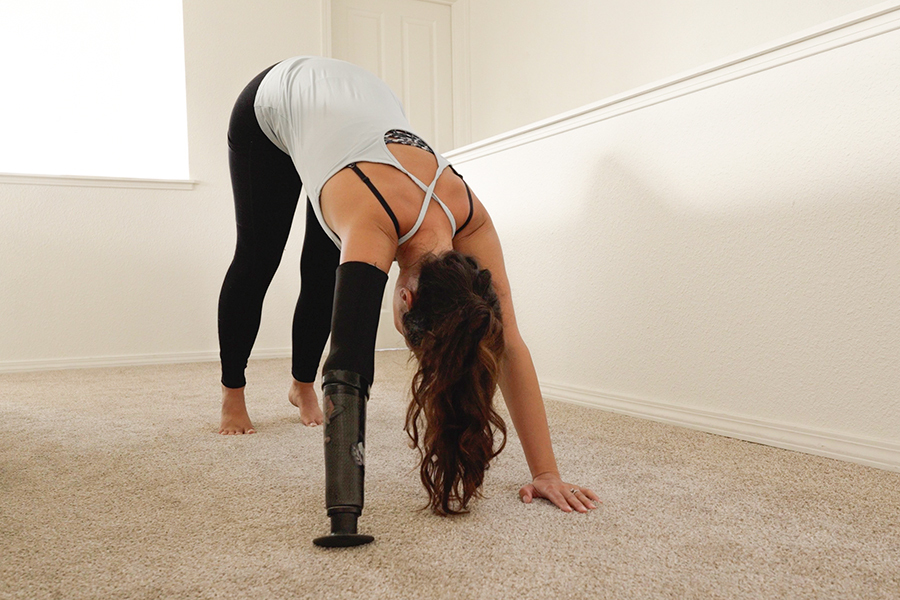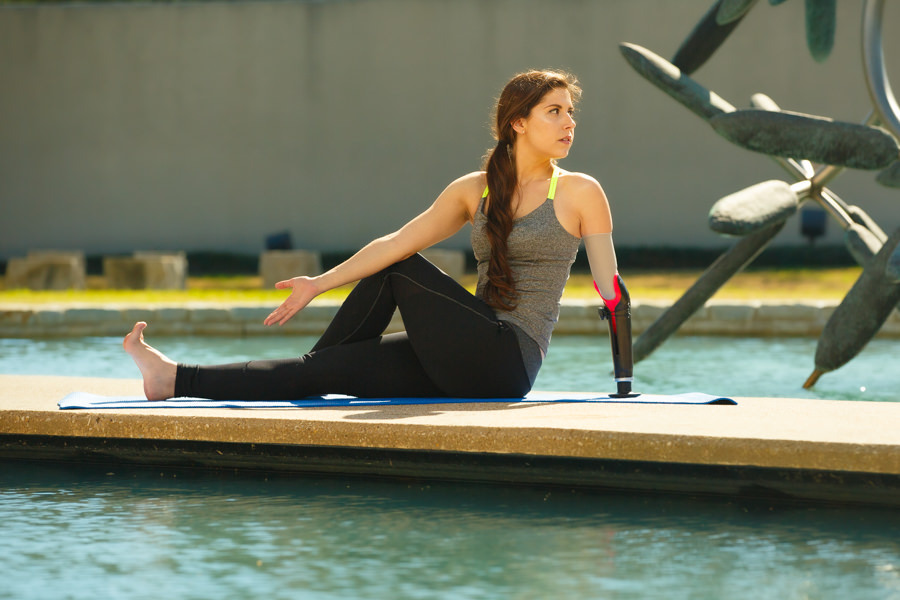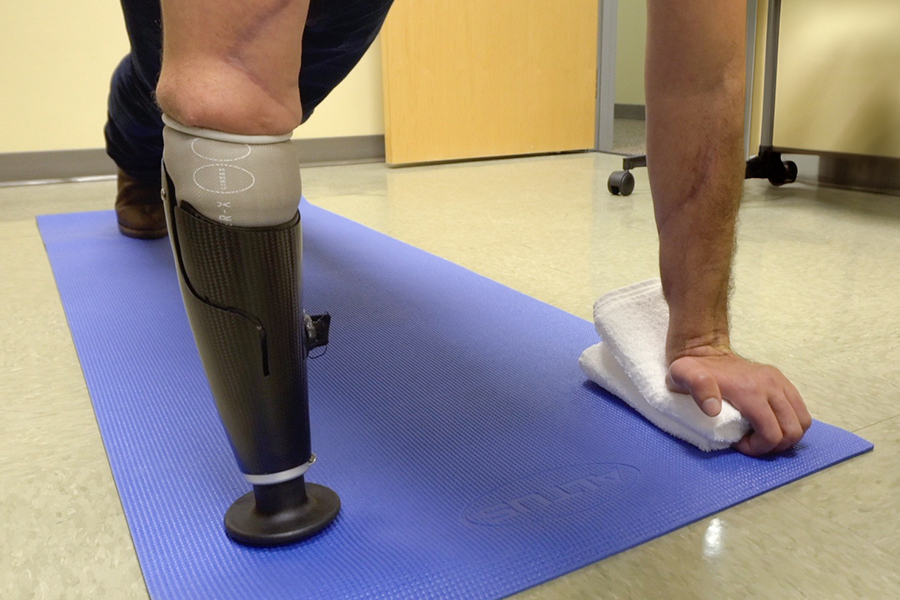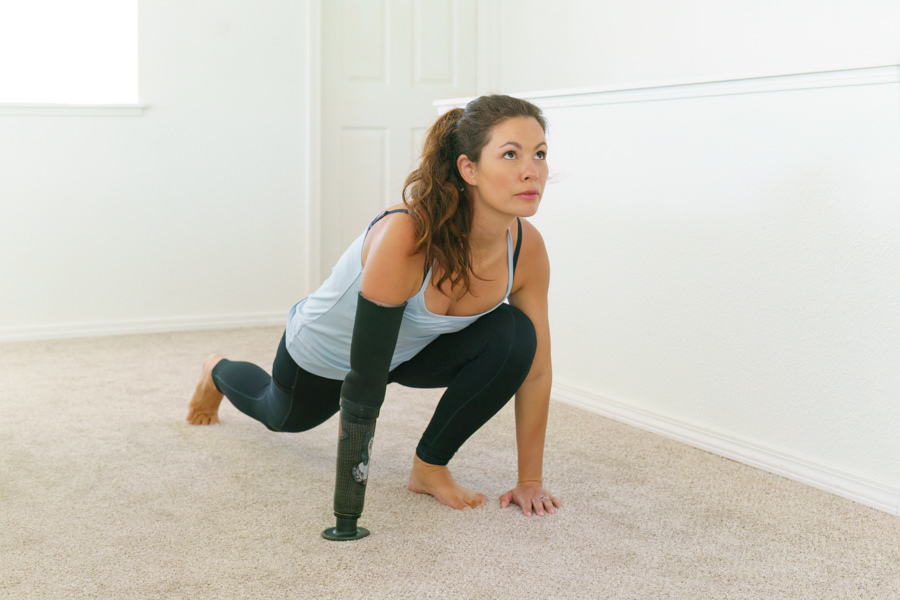Many upper limb amputees are trauma survivors who experience depression, anxiety, PTSD, and other distressing emotions. Some people have a negative self-image related to their limb loss or even a sense of shame about looking different. Yoga and its relaxing qualities can help you in the quest to accept your differences and work through psychological challenges.
If you have a congenital limb difference and are thinking about trying yoga, you may not be sure where to begin. If you’re an amputee who did yoga before your limb loss, it’s important to understand that you can usually return to your yoga mat with the right "tool." Either way, our team of upper limb specialists can help you practice yoga safely while balancing out your body and having fun.
When our patients want to participate in yoga or other kinds of exercise, we introduce them to a range of various activity-specific prosthetic devices. A shroom tumbler is the most helpful device for yoga, especially when it comes to bearing weight on your hands, like in plank pose, lunge / runners lunge, or downward facing dog. Shaholly has tried other terminal devices for yoga and thinks the shroom tumbler provides the most stability. “This device is amazing for yoga compared to some other attachments that I’ve tried. It mimics an open hand pressing against the floor when I’m moving from downward facing dog to plank to cobra.”
A couple of years ago, our patient Angel went through her yoga routine to show us how she relies on her shroom tumbler. It’s there to stabilize any pose where the "hand" touches the ground, like in the pose below, where she demonstrates marichyasana III, a seated twist.
In yoga, resting is just as important as doing active poses or vinyasa flow.Yoga classes and home practices have a standard final pose: savasana / corpse pose. You lie down on your mat, close your eyes, and sink into the rare space of a still mind and body for several minutes. Those who are new to yoga may find this to be a difficult pose because it requires them to do nothing — very counter to American culture. When it’s time to sit up, there’s a sense of calm refreshment and a quiet mind to tamp down emotional stress.
For people who are interested in learning about yoga, there are more options now than ever before, especially since the pandemic, when thousands of yoga studios began offering classes via Zoom. The Zoom yoga classes I've attended are the next best thing to being in a room full of like-minded people — sometimes you can even see the other people doing asanas in their individual boxes on the screen! Other times, you just see the teacher. One excellent, free resource that I use myself and recommend to others is Yoga with Adriene. You can also check out a book called Yoga for Amputees.
If you are considering joining a yoga class, but aren’t quite sure yet, don't let the idea of doing yoga intimidate you. Yoga is intended to be the opposite of competing or trying to keep up with other people in a group exercise class. Each person has their own level of comfort and flexibility and energy. One of the primary tenets of yoga is “do no harm,” which means that we don't do poses or stretches or balances that hurt our bodies. There are easy ways to modify any yoga pose to make it safe. Over time, your body will loosen up, stretch out, relax. Your breath will deepen. And you will move into a deeper sort of mind-body practice. Doing yoga with an upper limb prosthesis is an excellent way to help you integrate your prosthesis into your body image and to become more comfortable with who you are and how you navigate life.
If you’d like to learn more about using an activity-specific prosthesis to help you practice yoga, or if you’d like to know if your device could handle the poses, please contact us. If you have any comments that you’d like to leave, please do so below. We hope you have found this article helpful.









%20President%20and%20Senior%20Clinical%20Director.jpg?width=600&height=600&name=John%20M.%20Miguelez%2c%20CP%2c%20FAAOP(D)%20President%20and%20Senior%20Clinical%20Director.jpg)










No Comments Yet
Let us know what you think